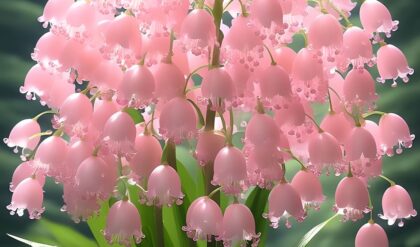The realm of orchids is vast and varied, but few species capture the imagination quite like the monkey orchid. Known scientifically as Dracula simia, this remarkable flower has fascinated botanists, horticulturists, and nature enthusiasts alike with its uncanny resemblance to a primate’s face. Beyond its captivating appearance, the monkey orchid serves as a testament to the intricate beauty and complexity of nature’s design, inviting us to explore the delicate balance of ecosystems and the wonders of evolutionary adaptation.

Introduction to Monkey Orchids
Definition and Scientific Classification
Monkey orchids, belonging to the genus Dracula, represent a fascinating subset of the orchid family Orchidaceae. The genus Dracula, derived from the Latin word for dragon, was initially classified under the genus Masdevallia but was later separated due to distinct morphological differences. The most famous species, Dracula simia, is renowned for its monkey-like appearance, but the genus includes over 120 known species, each with unique characteristics.
These epiphytic orchids are predominantly found in the cloud forests of Central and South America, thriving in high-altitude environments with constant moisture and cool temperatures. Their scientific classification places them in the subtribe Pleurothallidinae, a diverse group known for its miniature to small-sized plants with unique floral structures.
The taxonomy of Dracula orchids has been subject to revisions over the years, reflecting the ongoing nature of botanical research. Initially described by Carlyle A. Luer in 1978, the genus has since expanded to include species previously unknown to science. This continuous discovery and reclassification underscore the importance of biodiversity studies and the potential for new findings in tropical ecosystems.
Common Names and Their Significance
While “monkey orchid” is the most widely recognized common name for Dracula simia, various species within the genus have earned equally evocative monikers. These names often reflect the visual characteristics or cultural significance of the plants. For instance, some species are known as “dragon orchids” due to their fang-like sepals, while others have been dubbed “vampire orchids” for their dark, blood-red coloration.
The common names attributed to these orchids serve multiple purposes. Firstly, they provide an accessible way for non-specialists to identify and discuss the plants. The descriptive nature of names like “monkey face orchid” immediately conjures an image, making the species more memorable and relatable to the general public.
Moreover, these common names often reflect the cultural and historical context in which the plants were discovered or cultivated. They can provide insights into local folklore, traditional uses, or the impression these unique flowers made on early explorers and botanists. The name “Dracula,” for example, not only refers to the dragon-like appearance of some species but also evokes a sense of mystery and allure that has contributed to the genus’s
The Enchanting World of Monkey Orchids
Monkey orchids, particularly known by the scientific name Dracula simia, are not just captivating flora; they encapsulate a fascinating intersection of nature’s artistry and human fascination. These epiphytic orchids, reclassified from the Masdevallia genus, have become emblematic of the intricate beauty found in various ecosystems.
Introduction to Monkey Orchids
Definition and Scientific Classification
Monkey orchids, also known as Dracula orchids, belong to the Orchidaceae family. They were previously classified under the Masdevallia genus but have since been reclassified as a distinct genus called Dracula. The name “Dracula” is derived from the Latin word for “little dragon,” referring to the unique shape and appearance of the flowers.
Common Names and Their Significance
The common name “monkey orchid” is a nod to the remarkable resemblance of the flowers to a monkey’s face. This whimsical nickname evokes both wonder and curiosity about the mechanisms of evolution that result in such extraordinary adaptations.

The Fascinating Appearance of Monkey Orchids
Unique Flower Structure
Monkey orchids are known for their intricate and captivating flower structure. The petals and sepals of the flowers are arranged in a way that creates the illusion of a monkey’s face, complete with a prominent “nose” and “eyes.” This unique floral design is the result of millions of years of evolutionary adaptation.
The Resemblance to a Monkey’s Face
The striking similarity between the monkey orchid’s flowers and a primate’s face is truly remarkable. This visual illusion has captured the imagination of botanists, photographers, and nature enthusiasts alike, leading to the orchid’s endearing nickname.
Evolutionary Adaptations in Monkey Orchids
The Role of Mimicry in Nature
The development of the monkey orchid’s unique floral features is closely linked to the concept of mimicry in nature. Certain species evolve to resemble other organisms, often for the purpose of attracting pollinators or deterring predators. In the case of the monkey orchid, the mimicry of a monkey’s face may serve to attract specific pollinator species.
How Aesthetic Traits Develop in Plants
The evolution of the monkey orchid’s aesthetic features raises intriguing questions about the mechanisms that shape plant appearances. While the practical function of these traits is often related to reproduction and survival, the underlying genetic and environmental factors that contribute to their development are still not fully understood.
Habitat and Distribution
Natural Environment: Cloud Forests of Ecuador and Peru
Monkey orchids are primarily found in the cloud forests of Ecuador and Peru, where they thrive as epiphytic plants, growing on the branches and trunks of trees. These unique ecosystems are characterized by high humidity, frequent mist, and a diverse array of plant and animal life.
Ecological Importance of These Habitats
The cloud forests of Ecuador and Peru are incredibly important for the conservation of monkey orchids and other endemic species. These habitats serve as crucial biodiversity hotspots, supporting a wide range of flora and fauna that are adapted to the specific environmental conditions.

Pollination Mechanisms
Attraction Strategies for Pollinators
Monkey orchids employ a range of strategies to attract their primary pollinators, which are often specific species of insects or small mammals. The striking resemblance to a monkey’s face, combined with the production of nectar and other olfactory cues, helps to lure in the necessary pollinators for successful reproduction.
The Relationship Between Beauty and Reproduction
The intricate beauty of monkey orchids serves a vital function within their ecosystems. By developing aesthetically pleasing features, these plants are able to interact with their pollinators in a mutually beneficial way, ensuring the continuation of their species.
Conservation Status of Monkey Orchids
Threats to Their Survival
Despite their captivating appearance, monkey orchids face a number of threats to their survival, including habitat loss, over-collection, and the impacts of climate change. As these delicate ecosystems are increasingly fragmented or destroyed, the future of monkey orchids hangs in the balance.
Importance of Biodiversity
The plight of monkey orchids highlights the broader need for conservation efforts to protect the world’s biodiversity. These plants are not just objects of beauty, but integral components of complex ecological systems that support a vast array of life. Preserving their habitats is crucial for maintaining the overall health and resilience of these fragile environments.
Impact of Climate Change on Ecosystems
Effects on Monkey Orchid Populations
As the effects of global warming become more pronounced, the cloud forests that provide a home for monkey orchids are under increasing threat. Shifts in temperature, precipitation patterns, and other environmental factors can disrupt the delicate balance that these orchids require, potentially leading to their decline or even local extinction.
Global Warming and Habitat Loss
The loss of the cloud forests due to climate change and other human-driven factors is a major concern for the conservation of monkey orchids. As these unique habitats become increasingly fragmented or disappear altogether, the future of these captivating plants hangs in the balance.
Cultivation and Care of Monkey Orchids
Growing Conditions and Requirements
Cultivating monkey orchids can be a challenging but rewarding endeavor for dedicated hobbyists and horticulturists. These orchids have specific growing requirements, including high humidity, filtered light, and well-draining media, which must be carefully maintained to ensure their health and vigor.
Common Mistakes in Cultivation
Improper cultivation techniques, such as over-watering, insufficient light exposure, or the use of unsuitable potting media, can lead to the decline and even death of monkey orchids. Understanding their unique needs and avoiding common pitfalls is crucial for successful cultivation.
The Popularity of Monkey Orchids
Rise Among Orchid Enthusiasts
In recent years, monkey orchids have gained significant popularity among orchid enthusiasts and collectors. Their striking appearance and rarity have made them highly sought-after specimens, leading to an increased demand that can pose challenges for conservation efforts.
Balancing Appreciation with Conservation
As the popularity of monkey orchids continues to grow, it is essential to strike a balance between appreciating their beauty and ensuring their long-term survival. Responsible cultivation practices and sustainable collection methods can help mitigate the negative impacts of increased interest in these captivating plants.
Ethical Considerations in Collecting
Over-collection and Its Consequences
The desire to own and display monkey orchids has led to the over-collection of these plants from their natural habitats. This practice can have devastating consequences, as it can deplete local populations and disrupt the delicate ecological balance of their ecosystems.
Sustainable Practices for Orchid Collectors
Responsible orchid collectors and enthusiasts must prioritize the conservation of monkey orchids and their habitats. This may involve supporting sustainable cultivation practices, participating in conservation initiatives, and promoting ethical collection methods that minimize the impact on wild populations.
Conclusion
Monkey orchids, with their captivating appearance and intriguing evolutionary adaptations, have captured the hearts and imaginations of people around the world. These enchanting plants serve as a reminder of the incredible diversity and beauty found in nature, while also highlighting the urgent need for conservation efforts to protect them and the fragile ecosystems they call home. By fostering a deeper appreciation and understanding of monkey orchids, we can work to ensure their continued survival and the preservation of the natural wonders that inspire us.



